What do historic lime finishes look like on Scottish traditional buildings?
Materials | Written by: Anne Hitchman | Tuesday 6 August 2024
External finishes are an important defence of a building against the Scottish weather. They help to buffer moisture when it rains and dry out the walls when the weather improves. Evidence tells us that until the 17th century, most buildings would have been covered with an external finish.
However, from the late 18th century exposed stone walls became fashionable and so lost their protective coats. This change led to the evolution of Scotland’s many pointing styles. In this blog we explore different techniques used for external finishes in Scotland.
What are external lime finishes?
Historically, most buildings would have been covered with a lime finish. Current and ongoing research demonstrates that this was mainly harl; a coarse blend of local sand and lime, dashed onto the surface of the building. Often, this would have then been painted with a limewash (lime and water), which would have been renewed regularly.
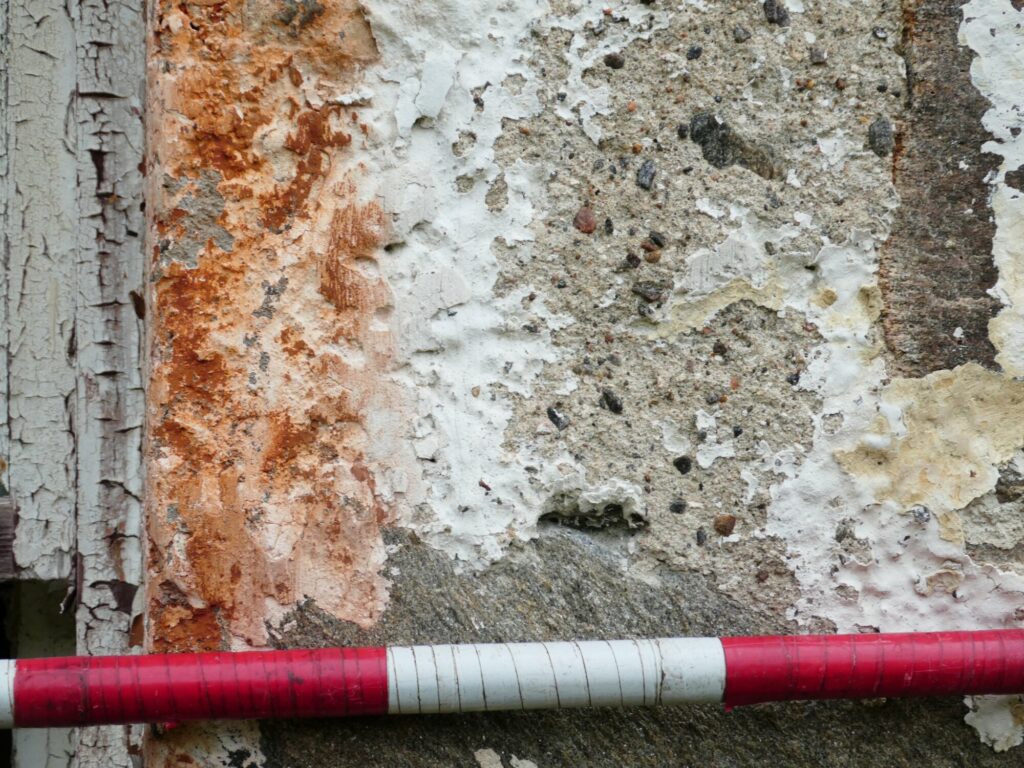
A gritty harl covered in limewash at Gorstan Cottage, Garve, in the Scottish Highlands. © Tim Meek
This creates a soft, but durable and protective, finish. Surviving finishes can still be found today, particularly in sheltered areas. Previously, the number of buildings that still have historic finishes has been underrated. Technical Paper 31: Historic External Lime Finishes explores these finishes and presents a list of case studies where fragments of historic finishes remain. The identification of these can give a good understanding of the historic practice, and how these buildings performed in exposed environments.

The collapsing roof of a later lean-to revealing earlier exterior harl applied to the rear of a 17th century building in Angus. © Tim Meek
What is pointing?
When fashion changed to exposed stone walls, the external finishes also changed. Lime mortars were used between the stones and to protect the joints, now called pointing. While harling continued in exposed parts of Scotland, in other areas a hybrid type emerged, one that covered the joint without a complete harl. One suggestion is that during the building process, any mortar that squeezed out of the wall was spread across the joint, and no further treatment was needed
In Technical Paper 33: Masonry Pointing and Joint Finishing, sixteen pointing styles were identified. Early examples show that lime mortars were used initially to cover the joint. For example, ‘sneck harl’ or ‘slaister finish’ where the high points of the underlying masonry were left exposed. Later, they were used to decorate and highlight the junctions between stones.
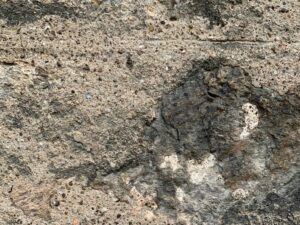
A lined out slaister on a wall that was once harled and limewashed. © Tim Meek
What unified all the different regions of Scotland was the practice of lining out, the creation of a straight line in damp mortar. This was done in many different ways, sometimes formally and skilfully, often highlighting the lining out with pieces of slate or filling in the depression of the line with white paint. Sometimes a raised ribbon was formed and occasionally the ribbon was decorated.
These styles must have been time consuming and required skill. At other times it was done very casually, and no attempt was made to keep the lining out particularly straight. All the styles have a cultural value and are an effort to formalise a facade.
Examples of different finishes
Technical Paper 33 also includes a list of distinct surface finishes that were found on historic buildings. Here we have included some examples of pointing and finishing techniques that you might not have seen before.
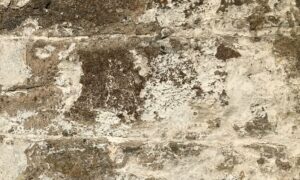
A sneck harl, or flush finish with horizontal lines and limewash. The mortar extends over the joints but leaves the high points of the stones exposed. It covers any pinning stones – small stones pushed into wide joints to use less mortar – and can then be covered in limewash. © Tim Meek
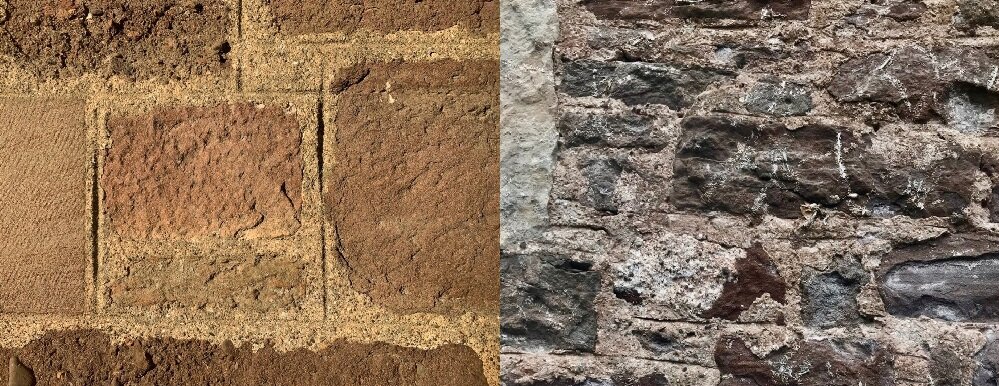
Two examples of lining out. Finishes often include horizontal or vertical lines. The lines are sometimes very straight, drawn with a ruler. They can also be used to create artificial stone outlines (as at left). Other examples are lined out irregularly, following the natural joints of the stones (as on the right). © Tim Meek
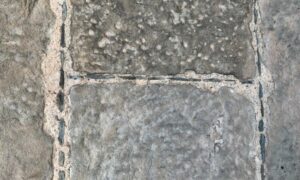
Cherry cocking is the practice of using pieces of slate as pinning stones. Often, these would have been carefully placed to create straight black lines along the mortar joint. This can be used in conjunction with different types of pointing, such as flush finish or raised pointing. © Tim Meek
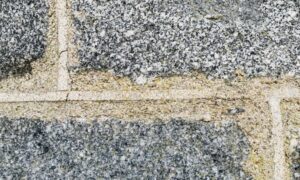
A ribbon finish, where after applying the lime, a smooth raised line is created along the joints. This is done by carefully cutting away the top layer on either side of the raised line, leaving a smoother upstanding ribbon and a very formal and regular finish. © Tim Meek
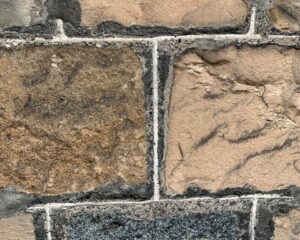
An example of ruling out, where white lead or limewash is added into the lines of the joint. This creates a more formal appearance and highlights the joint. The lines in the mortar are highlighted by a white line. To increase the contrast, the mortar was darkened with coal waste. © Tim Meek
These finishes can be found throughout Scotland. The tradition was even continued into modern times, and the same technique was used with cement-based mortars. Be aware, once you start to look for lime finishes and traditional lime pointing styles you start to see them everywhere!
Find out more
To read about our research about lime finishes, read Technical Paper 31: Historic External Lime Finishes and Technical Paper 33: Masonry Pointing and Joint Finishing. Both of the publications have gazetteers of examples with different finishes.
About the author:
Anne Hitchman
Anne Hitchman is a Content Officer, working at the Engine Shed. Her background is building conservation and she enjoys telling people about different traditional building materials, particularly lime and sustainable refurbishment.
View all posts by Anne Hitchman



